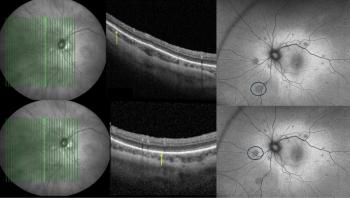
Fluocinolone acetonide for DME accepted by NHS Scotland
The SMC has accepted fluocinolone acetonide (Iluvien, Alimera Sciences Inc.) - the only sustained-release treatment for chronic DME - for restricted use within the NHS Scotland after completing an assessment and review of a simple patient access scheme.
The Scottish Medicine Consortium (SMC) has accepted fluocinolone acetonide (Iluvien, Alimera Sciences Inc.) - the only sustained-release treatment for chronic diabetic macular oedema (DME) - for restricted use within the National Health Service (NHS) Scotland after completing an assessment and review of a simple patient access scheme. Fluocinolone acetonide will be available to NHS Scotland patients who are considered to be responding insufficiently to other available therapies.
"The SMC acceptance of fluocinolone acetonide is wonderful news for DME patients in Scotland," said William Wykes, FRCS, FRCOphth, consultant ophthalmologist at NHS Southern General Hospital, and lead clinician, diabetic retinopathy, NHS Greater Glasgow and Clyde, the largest health board in Scotland. "Vision is so important to a person's overall quality of life, and now pseudophakic patients with chronic DME in Scotland will have access through NHS Scotland to an effective, sustained-release therapy that could improve their sight."
"The favourable assessment and acceptance of ILUVIEN by the SMC is a major step forward for NHS Scotland patients suffering from chronic DME," said Dan Myers, president and chief executive officer, Alimera Sciences Inc. "Patients of NHS Scotland, who are insufficiently responsive to other treatment options, now have access to a product that can provide a therapeutic benefit to them for up to 36 months."
The NHS specification for restricted use includes only patients who have a pseudophakic eye. Further, retreatment requires a positive response to and subsequent need for this product.
Newsletter
Get the essential updates shaping the future of pharma manufacturing and compliance—subscribe today to Pharmaceutical Technology and never miss a breakthrough.













































